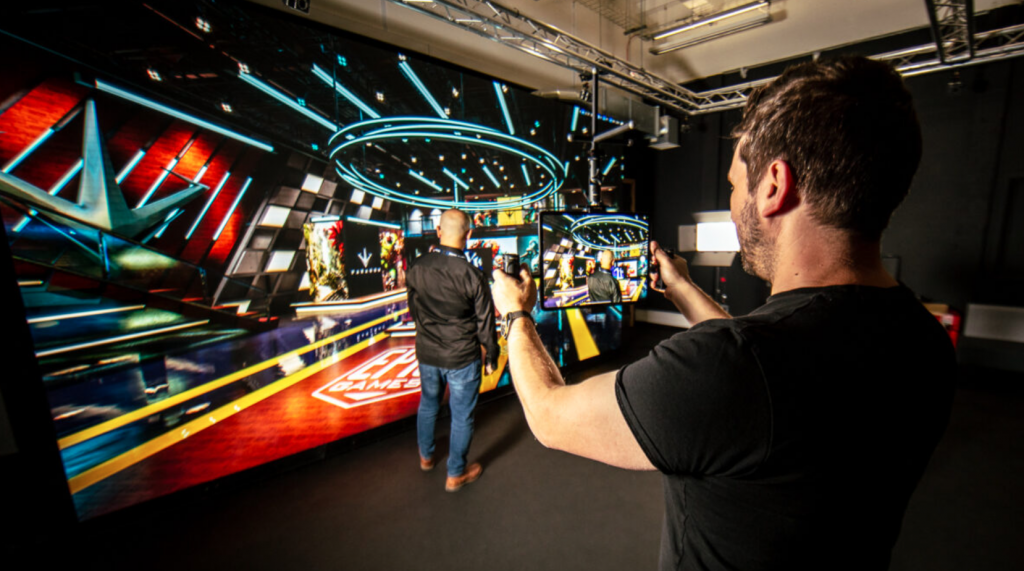
5G technology puts actors in the ‘same’ studio – 280 miles apart
A novel use of wireless 5G technology has allowed two actors to do a scene together in the ‘same’ studio – even though they were 280 miles apart.
Creative industry experts at the University of Abertay in Dundee worked with a production company in Manchester to connect digital backdrop ‘movie magic’ screens in two separate locations.
In a UK first, the real-time virtual production test sequence could pave the way for the TV and film industry to cut down on travel, use of exotic locations and a less expensive alternative to so-called ‘green screens’.
The short test sequence – featuring a sci-fi narrative based around ‘AI Armageddon’ – was directed by Professor Peter Richardson, head of virtual production at StoryFutures and professor of creative industries at Royal Holloway, University of London.
He said: “From a directing perspective, we had a team up in Dundee and a team down in Manchester where I was physically based, and I would give the actors direction over the 5G network, as well as receiving a direct feed from the camera in Dundee.
“I could see both shots on my monitor and the two actors that are 280 miles away acting together as though they were there in the same room. It’s been an interesting journey and we managed to get some really great material, so when the shots are compiled together you really do believe the actors are side by side, face to face.”
Abertay University hosts the 5G testbed in Dundee, giving researchers access to a private, controlled network to develop high-performing mobile processes almost matching the speeds of hard-wired connections.
Matt Bett of Abertay University’s Division of Games Technology and Mathematics said the use of virtual production coupled with 5G has enormous potential for the industry, including scope for a significant reduction in carbon footprint through reduced travel.
He added: “The Tay5G Virtual Production project has given us an opportunity to showcase the power of 5G for film production in a way that’s never been accomplished before. These results open the way for 5G to facilitate some major advances in the film and TV industries in the future and to put the UK at the forefront of the huge range of possibilities currently the horizon.”
Virtual Production is a new cinematography technique that uses computer-generated imagery (CGI), high-definition LED screens and motion capture to create virtual sets, allowing filmmakers and theatre directors to create large-scale digitally generated environments to support real-time interaction, offering a faster, less expensive alternative to green screens.
The project is the first UK proof of concept for wireless virtual production film-making, opening the door to a more flexible approach as 5G is rolled out across the country, while also showcasing the potential for mobile studios capable of being set up on any site with a 5G connection.
Led by Abertay University in Dundee, the 5G project is part of the Tay5G use case trial funded by the Scottish Government through the Tay Cities Region Deal and is supported by Dundee City Council; InGAME (Innovation for Games and Media Enterprise); VSS (Video Screen Services) StoryFutures; Royal Holloway, University of London; Scotland 5G Centre and telecoms infrastructure company AWTG.
A large LED screen, part of which was previously used to film 2022 movie The Batman, was installed by VSS in Abertay’s new Virtual Production Research Environment in Dundee and was linked via 5G by AWTG to a similar screen in Manchester.
Original News Link: https://futurescot.com/5g-technology-puts-actors-in-the-same-studio-280-miles-apart/